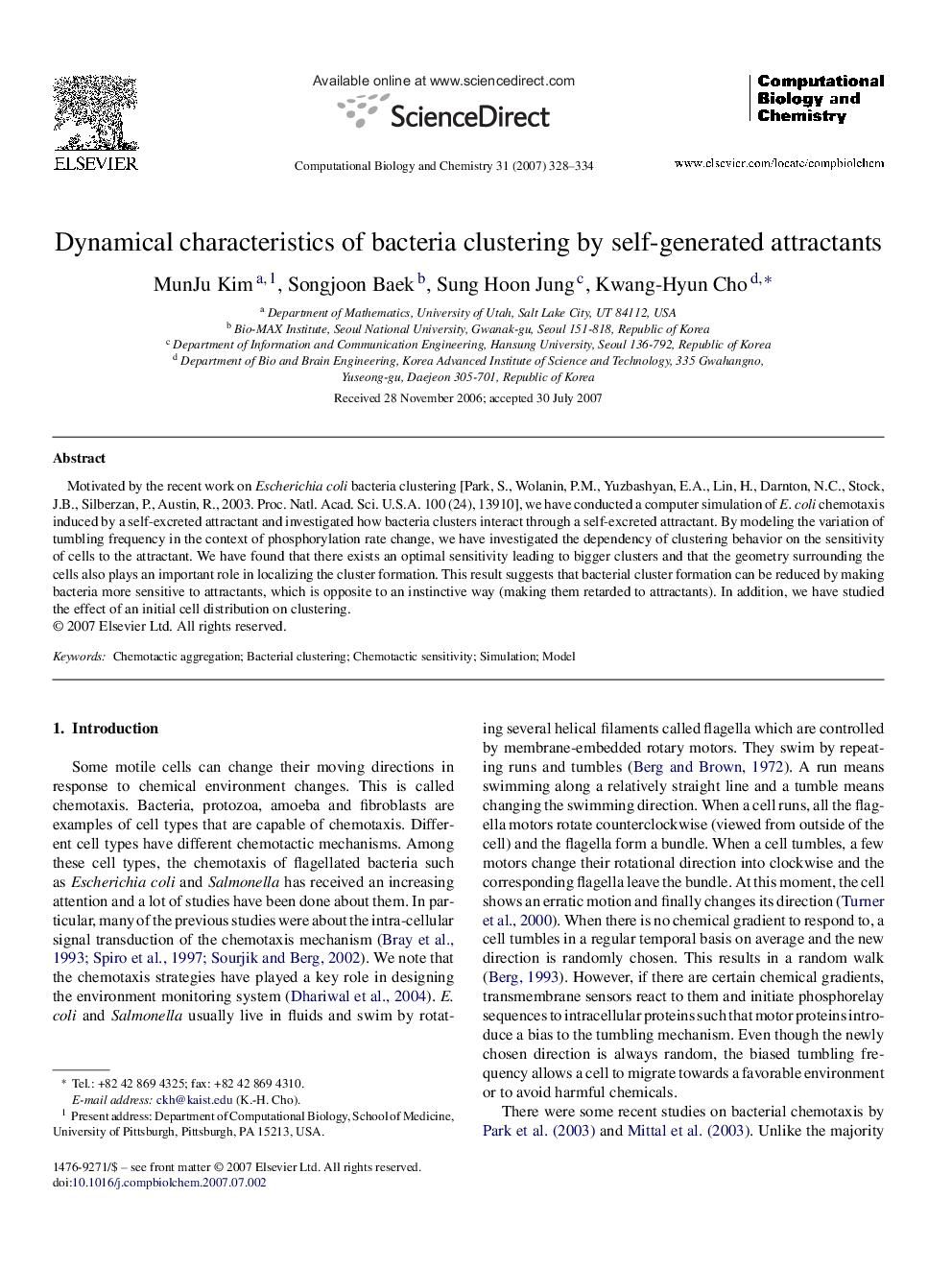| Article ID | Journal | Published Year | Pages | File Type |
|---|---|---|---|---|
| 15539 | Computational Biology and Chemistry | 2007 | 7 Pages |
Motivated by the recent work on Escherichia coli bacteria clustering [Park, S., Wolanin, P.M., Yuzbashyan, E.A., Lin, H., Darnton, N.C., Stock, J.B., Silberzan, P., Austin, R., 2003. Proc. Natl. Acad. Sci. U.S.A. 100 (24), 13910], we have conducted a computer simulation of E. coli chemotaxis induced by a self-excreted attractant and investigated how bacteria clusters interact through a self-excreted attractant. By modeling the variation of tumbling frequency in the context of phosphorylation rate change, we have investigated the dependency of clustering behavior on the sensitivity of cells to the attractant. We have found that there exists an optimal sensitivity leading to bigger clusters and that the geometry surrounding the cells also plays an important role in localizing the cluster formation. This result suggests that bacterial cluster formation can be reduced by making bacteria more sensitive to attractants, which is opposite to an instinctive way (making them retarded to attractants). In addition, we have studied the effect of an initial cell distribution on clustering.
